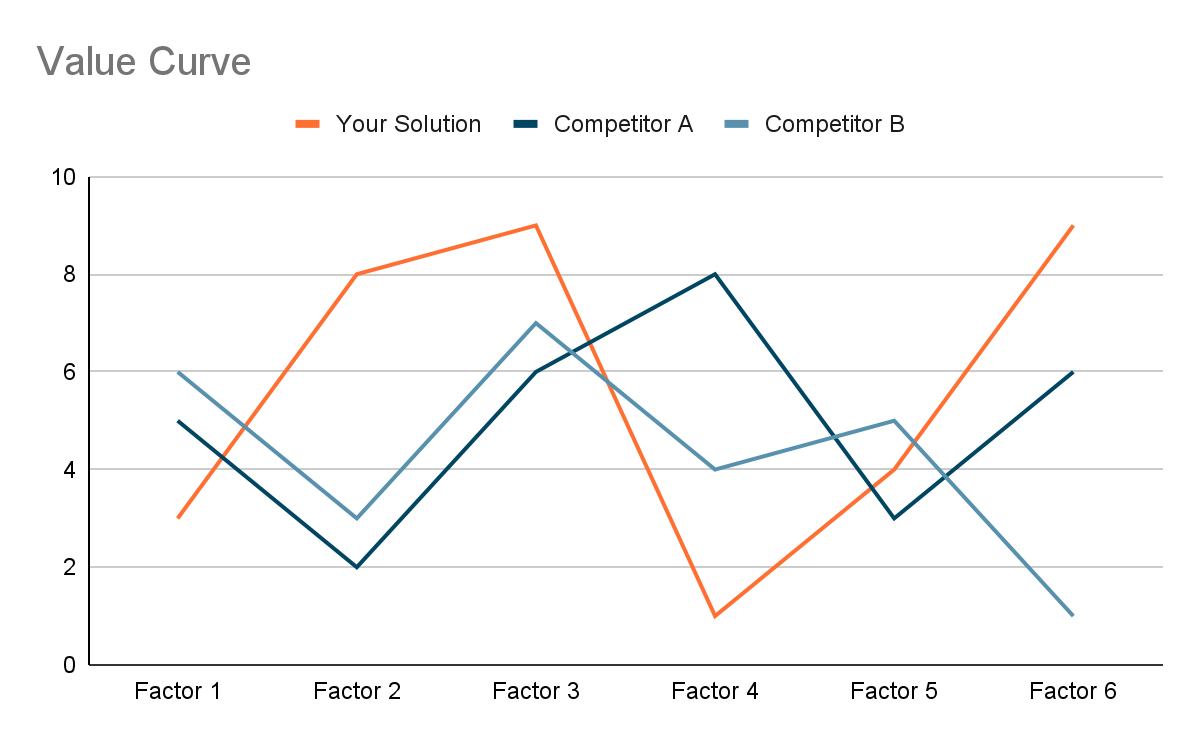For a successful business, you need to get an idea of what your potential customers want and need, and then build something that addresses these needs. You also want to do so differently than your competition. How will your product be substantially better than existing solutions? Your value proposition answers that question.

Crafting a value proposition is a crucial step for the success of your product. You might feel stressed by the task because you want to do it perfectly, but don’t worry, in this article, we’ll look at the most important steps in creating a value proposition and share a template that you can use as a guide.
A value proposition is what you expect to be the reason why customers will choose your product or service over another. It can be expressed as a clear statement or slogan that articulates the unique benefits and value that a product promises to its potential customers.
Your value proposition answers the question, “Why should a customer choose this product or service over another?” This highlights how the product addresses the specific needs of a customer segment, how it’s solving their problems, or how it’s fulfilling their desires.
You can also think of your value proposition as a set of opportunities you will address (as well as those that you won’t address).
In a competitive market, you have to differentiate your product or service from others. You want your target group to know why they should choose you over other solutions. And you want to make sure that the thing you’re going to build actually matches the needs of your target group and to achieve product market fit.
You can use the value curve method as a powerful tool for value proposition design.
The value curve method lets you visually represent the relative value of different product or service offerings compared to competitors. The visualization as a simple chart helps you focus on the things that differentiate you from your competitors and develop a clear and easily explained value proposition.
On the horizontal axis, you have the factors that are important for your targeted customers, the needs they want to address, the pains they want to relieve. What you put here should be based on user research.
On the vertical axis, you put the score for each of the factors listed on the horizontal axis. The less a factor is addressed by the solution, the lower the score. When the solution solves the need/pain perfectly, the score is highest.
A value curve can look like this:

When you plot a graph for your own product/solution together with your competitors’ graph, you can compare them visually, find strengths and weaknesses, identify your unique selling points (USP), and formulate your value proposition.
You can reshape your value curve, by asking yourself, what you can reduce, if there are factors you want to eliminate or raise, or if there is a potential to create something from scratch that does not yet exist.
Keep in mind that you don’t want to be the best at everything, but that you want to address the needs of your specific customer segment in a unique way — and better than anyone else.
One well-known template is the value proposition canvas from Strategyzer. It works best if you do a live workshop with your team. You can watch this short video about how to use the value proposition canvas, to get a quick introduction. Another helpful template is the Problem statement canvas by Marius Ursache.
In this article, I’m sharing my own adapted template that combines the above-mentioned and some other influences into an easy-to-use table. It focuses on clearly matching problems/opportunities and solutions. It’s also easier to extend, because of the simple table format.
If you don’t have much time, you can just go through the template and fill in the sections.
But if you prefer to have some more information, here’s an overview with a step-by-step process for using the template:
In this first step, you create the customer profile. You define the user segments that you will focus on, their jobs, their emotions, and the (measurable) impact that their actions have. The goal is to find a group of people with specific needs that are not met.
Here, you collect some context. What’s the market situation like? Who are the competitors? What are existing solutions and their disadvantages?
In this area, you collect the problems together with the situation in which they occur and the pains they create.
In the problem space, it’s not just about problems. You also collect opportunities, together with the potential gains.
How do you discover these? In the beginning, you usually find the needs, problems, and opportunities by doing user interviews or conducting surveys. However, you can’t expect to know everything about the problem space before you start. You also need to make some assumptions. Later, when you start implementing, you verify them by building prototypes, testing, and iterating on solutions.
Why are problems and opportunities in separate sections? In this template, we divide them into problems (with a focus on concrete needs or pain points) and opportunities (focused on desires), to make sure we’re thinking of both the negative aspects that need to be fixed and the opportunities for exciting new solutions that positively improve the customer’s lives.
Here, you collect solution ideas and connect them to the problems and opportunities that you documented in the problem space. How might they relieve the respective pains? How might they be a gain creator?
You should also note the type of value you want to create here.
By now, you should have a good overview of what your unique solution could offer your target audience and how it will differ from the current solutions. You can summarize your value proposition in the form of a value proposition statement.
How are you unique? Write down how your solution will address the core problem, provide distinct benefits, and outperform competitors.
A strong value proposition helps you differentiate your product from the rest of the pack and sets you up for long-term success. The following are two examples:
Trello is one of my all-time favorite products for organizing my work and side projects. Their value proposition statement states: “Trello’s boards, lists, and cards enable you to organize and prioritize your projects in a fun, flexible, and rewarding way.”
This captures the solutions that Trello addresses for its target group (with boards, lists, and cards). Plus, it promises to do it in a fun, flexible, and rewarding way that differentiates from other boards. Trello was very successful in providing value and was acquired by Atlassian for 425 million dollars in 2017.
“Belong Anywhere”
When Airbnb first started operating in San Francisco in 2008 it didn’t appear to be a threat to the mainstream tourism accommodation sector. Airbnb was catering to a niche market that valued a personal connection with the host and living in a neighborhood, whereas hotel guests preferred traditional hotel facilities.
However, with Airbnb’s value proposition, which focuses on unique experiences and a sense of belonging, it was extremely successful and became a serious competitor first for low-budget and later for higher-budget hotels.
With its value proposition to “belong anywhere” it promises to provide distinct benefits to travelers, who are looking for the opportunity to immerse themselves in local cultures by staying in unique accommodations.
Using the value proposition template will help you get started, but as you proceed in product development, you will need to iterate on it to be successful in the long term.
For your product development, I suggest you adopt continuous discovery habits. Talk to customers every week. Collect what you learn from discussions and organize your data in a way that allows you to come up with insights.
You pick opportunities that match your desired outcome, focus on one after the other by doing experiments, and continuously build and ship solutions.
As you talk to customers every week, you should regularly revisit your value proposition with the latest insights in mind and check if you need to adapt it.
The value proposition must be supported by a profitable business model. So as you learn and adapt, both your value proposition and your business model might change.
A value proposition tells potential customers why they should choose your product/service rather than your competitors and makes the benefits of your solutions crystal clear.
To craft a “crystal clear” value proposition, you need to invest some effort into figuring out how you will actually provide value.
It makes sense to start with the customer in mind. Imagine their situation, their tasks, their problems, and their emotions. Also, look at the status quo and analyze the context like competitors and existing solutions. What are their disadvantages?
Make sure that your solutions don’t just address basic needs, but also contain at least one performance benefit. These benefits will help structure your value proposition.
Featured image source: IconScout

LogRocket identifies friction points in the user experience so you can make informed decisions about product and design changes that must happen to hit your goals.
With LogRocket, you can understand the scope of the issues affecting your product and prioritize the changes that need to be made. LogRocket simplifies workflows by allowing Engineering, Product, UX, and Design teams to work from the same data as you, eliminating any confusion about what needs to be done.
Get your teams on the same page — try LogRocket today.

A practical five minute revenue estimation method to help product managers compare ideas, drop low impact features, and prioritize smarter.

A practical guide for PMs who want to stop being bottlenecks, delegate smarter, and lead teams effectively with a clear ownership framework.

Stop letting unreliable data block features. Treat data as inventory to track quality, ownership, and ship with confidence.

Learn why slide decks slow teams down and explore better tools like whiteboards, PRDs, and prototypes to improve collaboration and alignment.